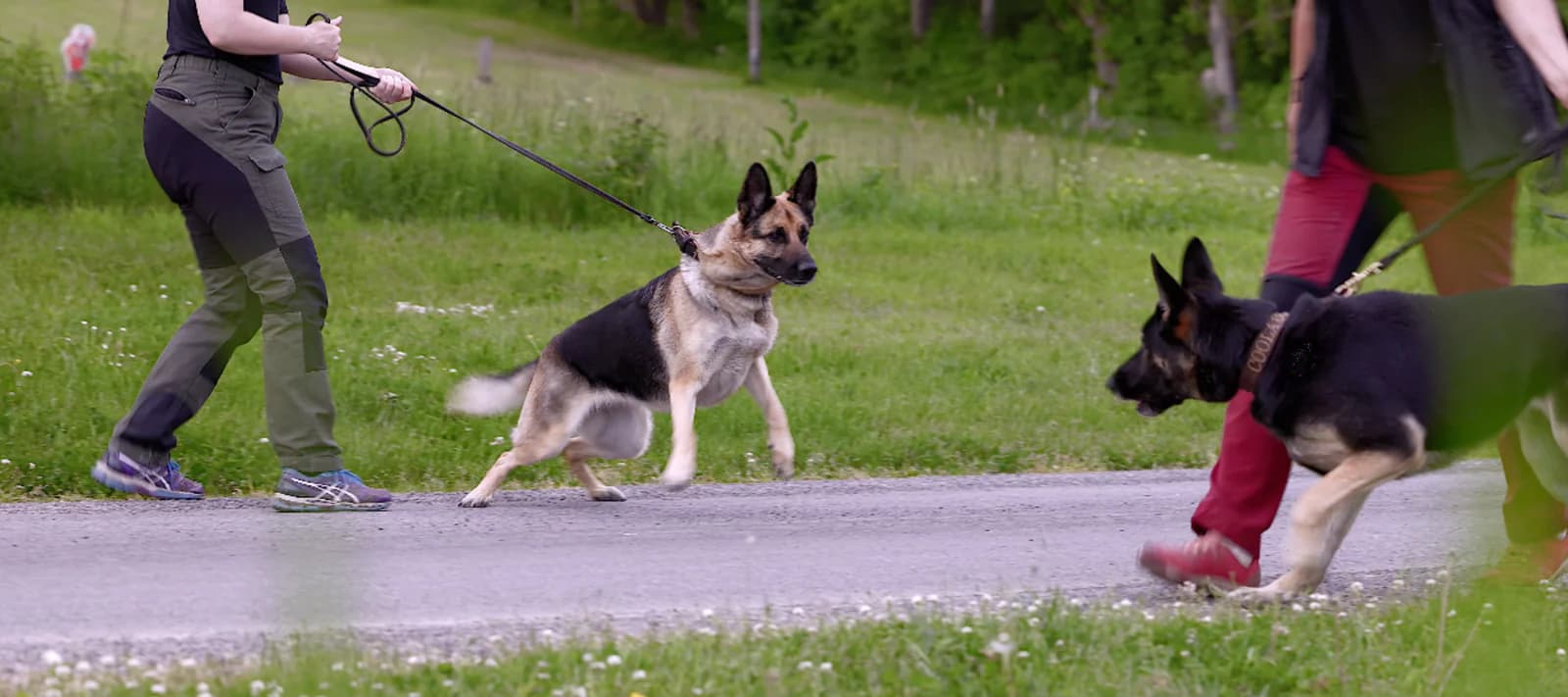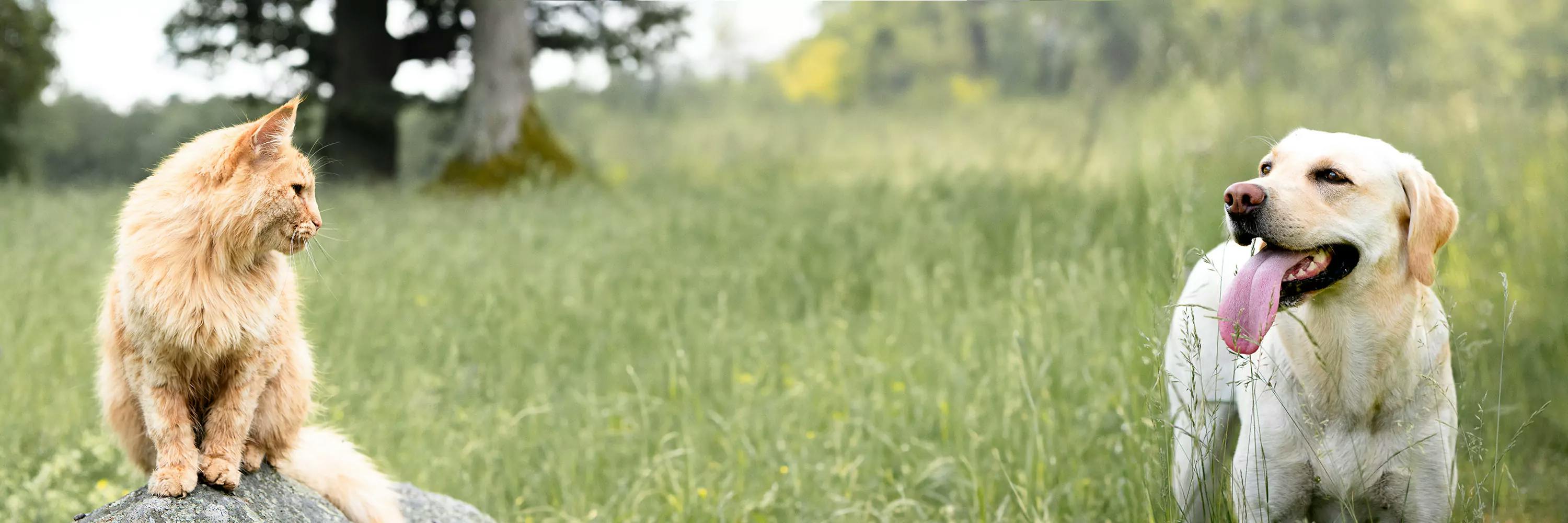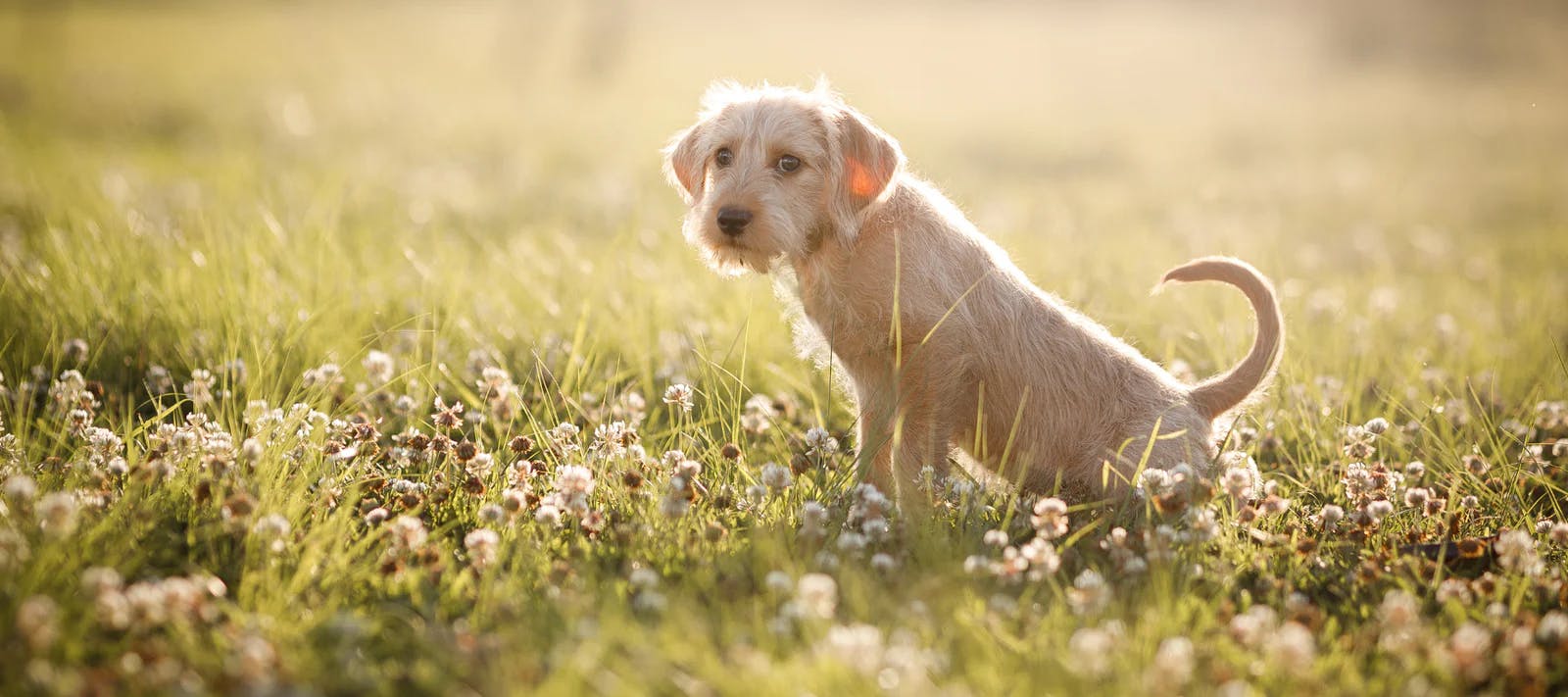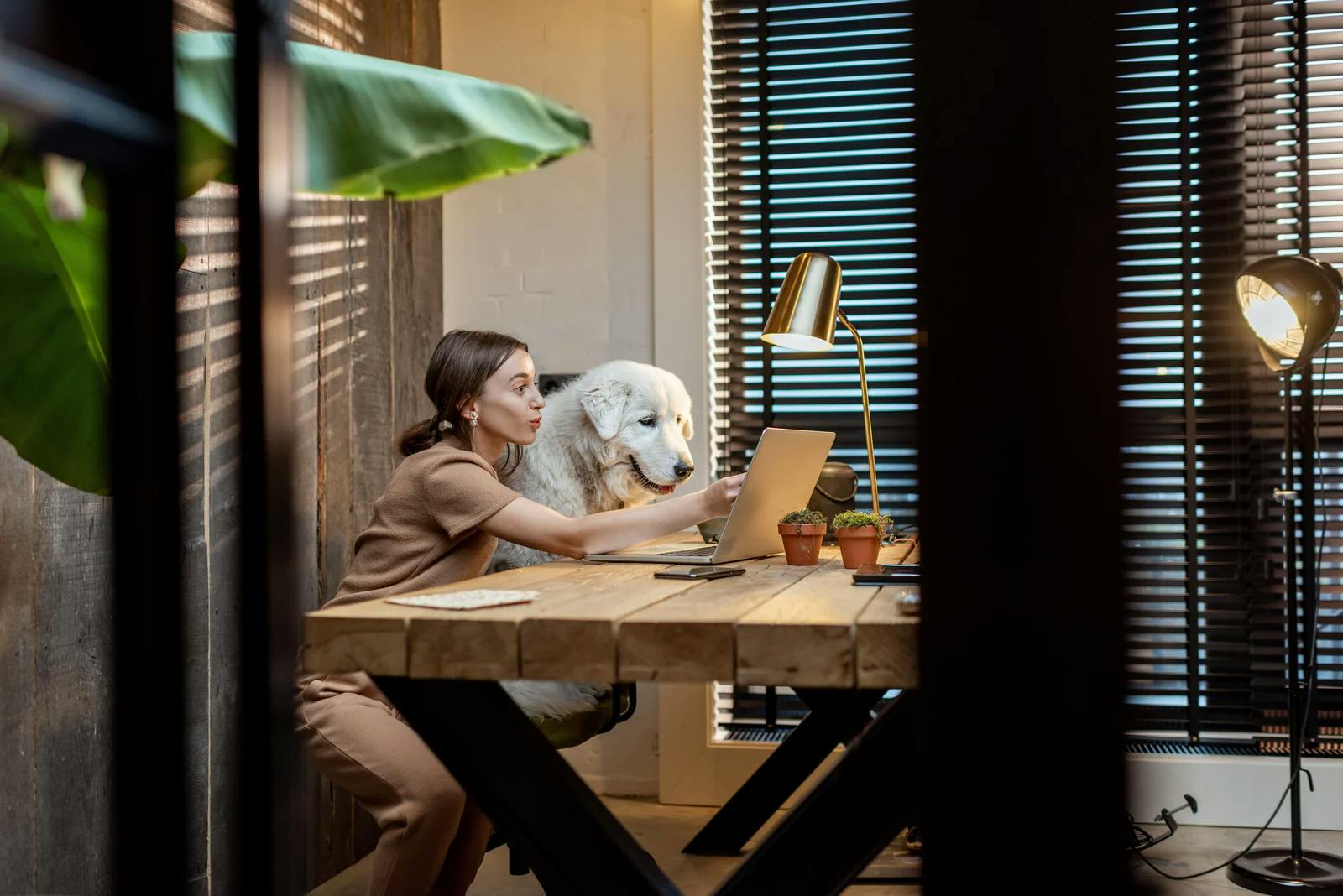Active location:
Select your country:

Treinamento para passar por outros cães - um exercício no controle de impulsos
Para muitos donos de cães, passar por outros cães durante os passeios é um grande desafio e um momento estressante. O cão pode latir, pular ou puxar a coleira porque quer brincar. Perguntamos a Jenny, do Hundprat.se, por que isso é tão difícil e o que você pode fazer se tiver um cão reativo.
"Pode haver muitas razões pelas quais temos dificuldade em passar por outros cães durante os passeios. Podemos ficar estressados e preocupados, transferindo então esse sentimento para o cão. Ou uma interação difícil com o cão pode depender do cão que está passando e das emoções que ele transmite. Se achamos que é um desafio interagir com outros cães enquanto estamos passeando com coleira, nós, como donos de cães, temos que aprender a mostrar ao cão como queremos que ele se comporte."
Comece praticando o básico
Um bom começo para ter sucesso com a reatividade à coleira é treinar o controle de impulsos com o cão. Se o cão não consegue resistir a correr atrás de um petisco ou brinquedo, certamente não conseguirá resistir a correr atrás de outro cão.
Outra vantagem do controle de impulsos é a comunicação. Quando o cão é capaz de resistir aos impulsos de começar a latir para o outro cão, mesmo que seja apenas por um curto período de tempo, nós, como donos de cães, temos uma pequena janela pela qual podemos nos comunicar com o cão. Temos um curto período de tempo para dizer ao cão o que queremos que ele faça em vez de latir.
Treinamento preparatório para a reatividade à coleira: 1-2-3
Aqui está um exercício simples e básico de controle de impulsos chamado 1-2-3.
Você vai precisar de:
Petiscos saborosos ou brinquedo
Um local dentro ou fora de casa onde você tenha espaço e o cão possa ficar sem coleira de forma segura.
Video showing the exercise
How to:
Have the dog sit or stand by your side. You don't have to use commands like sit or stay if you don't want to. The dog will still understand what you are after.
Hold the dog still and throw a treat or a toy a few meters in front of you.
Then slowly count 1, 2, 3, and on 3 you release the dog and it gets to run away and get the treat or toy. If the dog doesn't run away, you can run after the treat together with the dog.
Repeat the above steps a few times.
When the dog understands the exercise, you can try to have the dog loose from the beginning. Keep your hands close so you can easily catch the dog if he tries to jump start.
Count 1, 2, 3 and see if the dog understands that it can run and get the treat on 3.
When the dog understands the exercise, you can try counting 1, 2,5, 3 and see if the dog really listens for the word three.
If the dog finds it difficult, you can help by counting 1, 2 a little more quietly and with less energy in your voice and then say 3 a little louder. Then make it a little more difficult at a time by increasing the volume of your voice in small increments until you have the same volume of your voice on all the numbers.
If the dog tries to run on any number other than 3, carefully catch the dog and prevent it from making a mistake. If the dog finds it unpleasant to be caught, you can instead wear a leash that prevents the dog from running forward beforehand. Don't get angry at the dog if he does something wrong, but see it as play and show the dog how you want him to do it instead!
How do I then progress in training dog interactions?
Now you have started training on a basic step to progress in your dog interaction training. In this way, the dog gets to train both to resist his impulse to run towards the thing that attracts, and to wait and listen to you.
On Hundprat.se there are lots of tips and tricks when it comes to dogs and dog training and a whole online dog interaction training. There you can get tips on further steps and strategies, to create the very best conditions for the smoothest dog interactions possible for you and your dog walks. And hey, do you want to know what you should NOT do while meeting other dogs on walks, Jenny has written an article about it as well.
Good luck!
Hundprat.se & petgood
 Psst! Sometimes you need a lot of treats to train different new behaviors and exercises. Then it is very good with a low calorie treat!
Psst! Sometimes you need a lot of treats to train different new behaviors and exercises. Then it is very good with a low calorie treat!
Produtos mencionados







